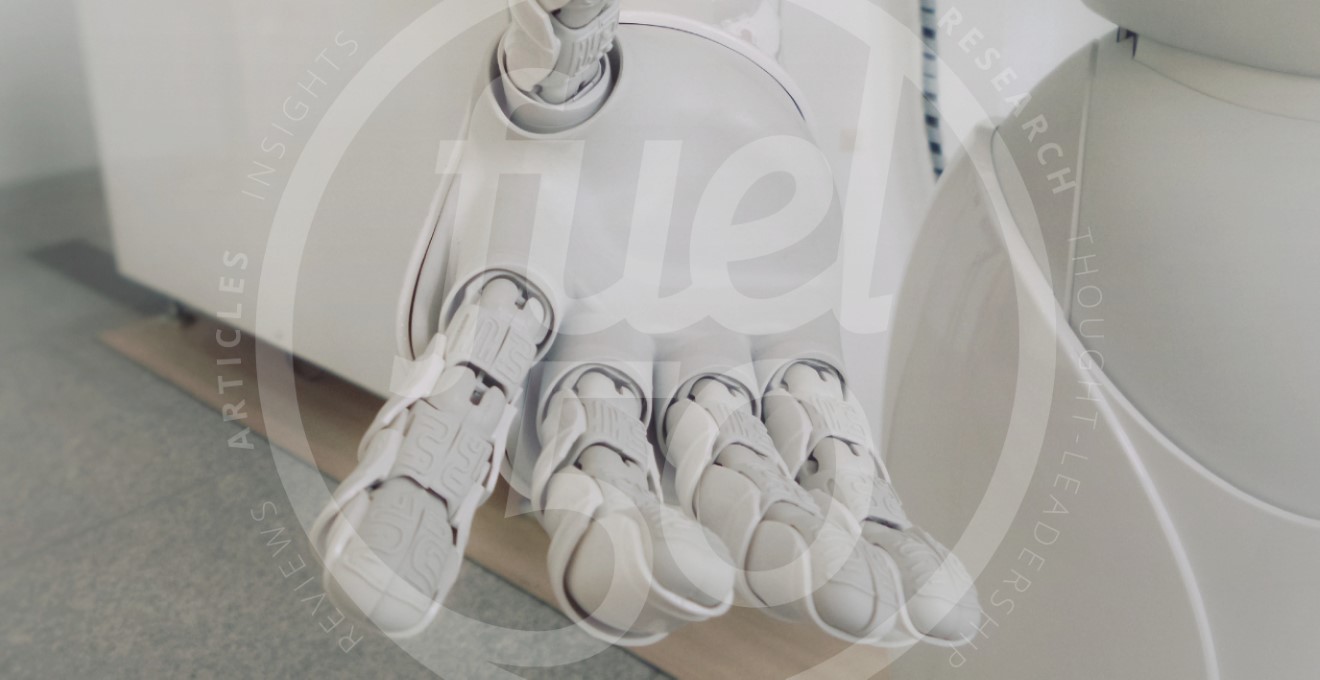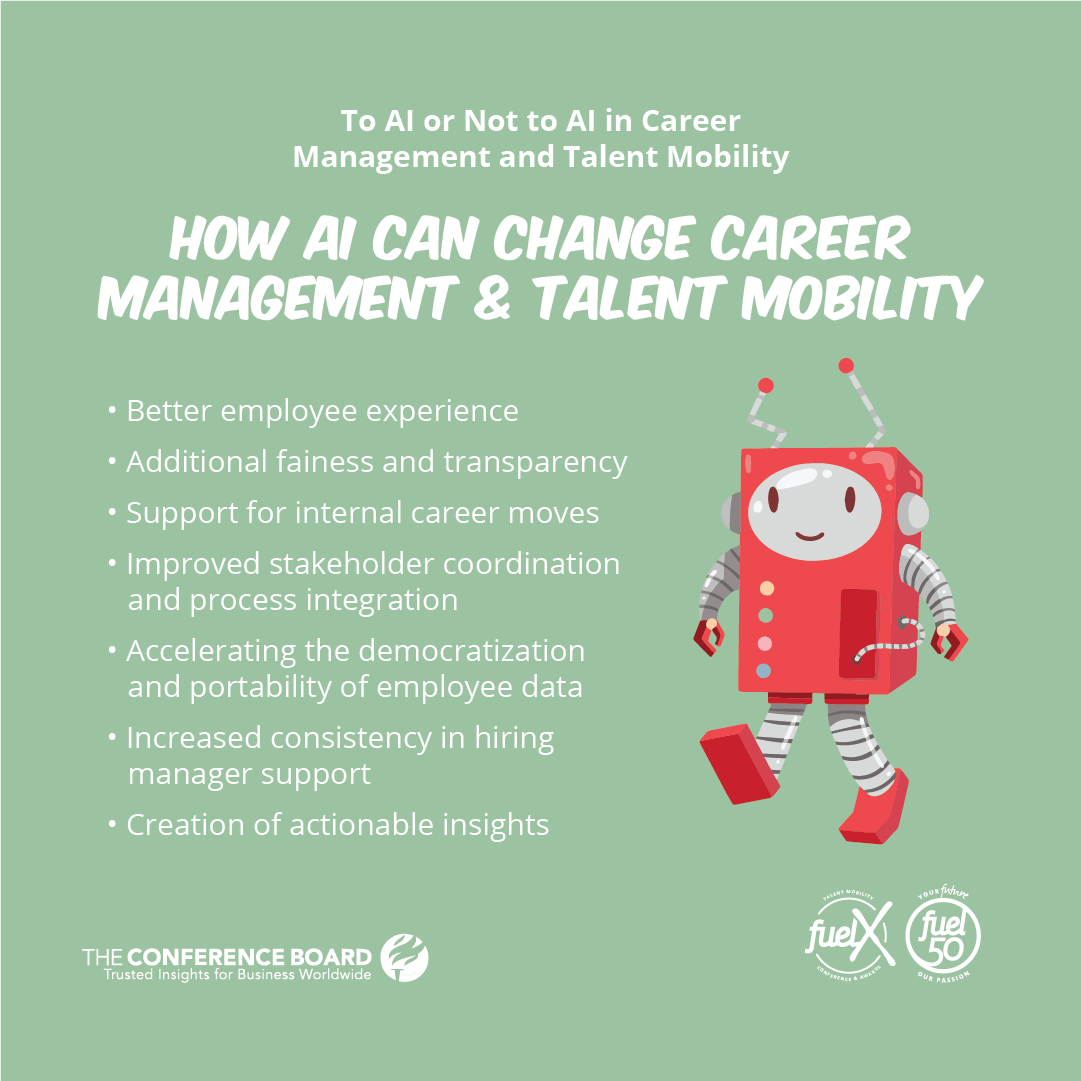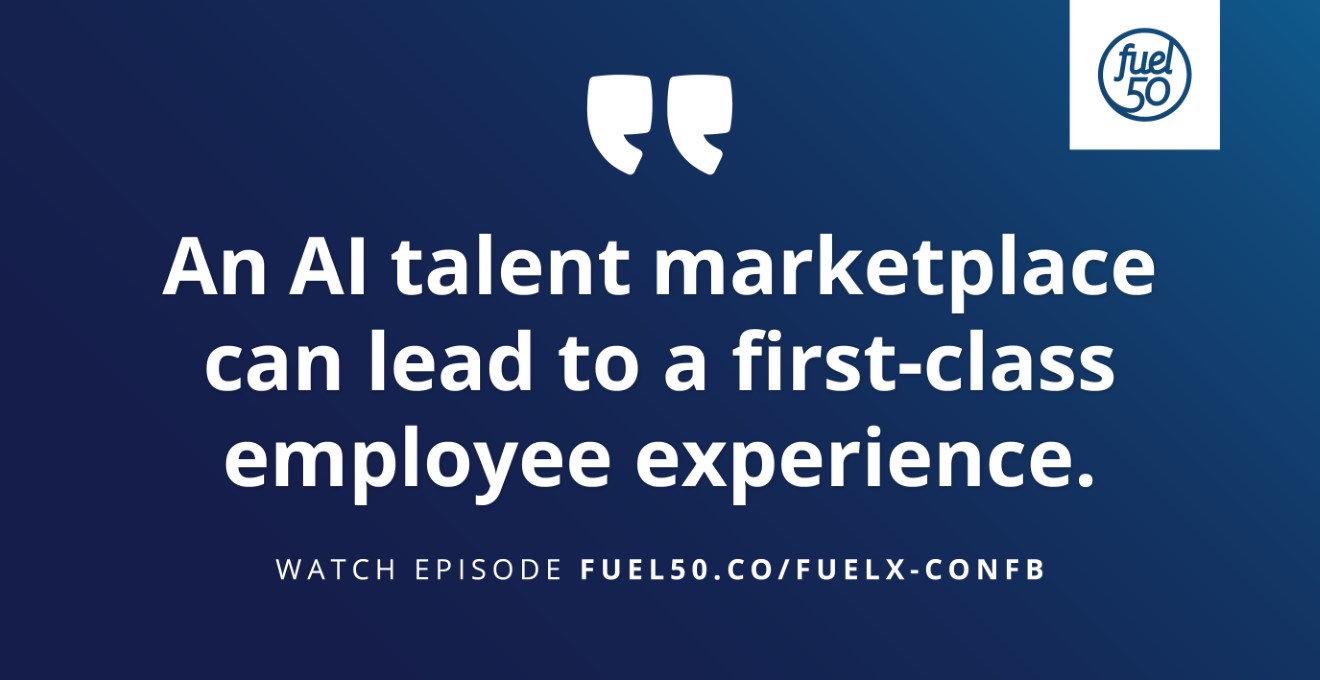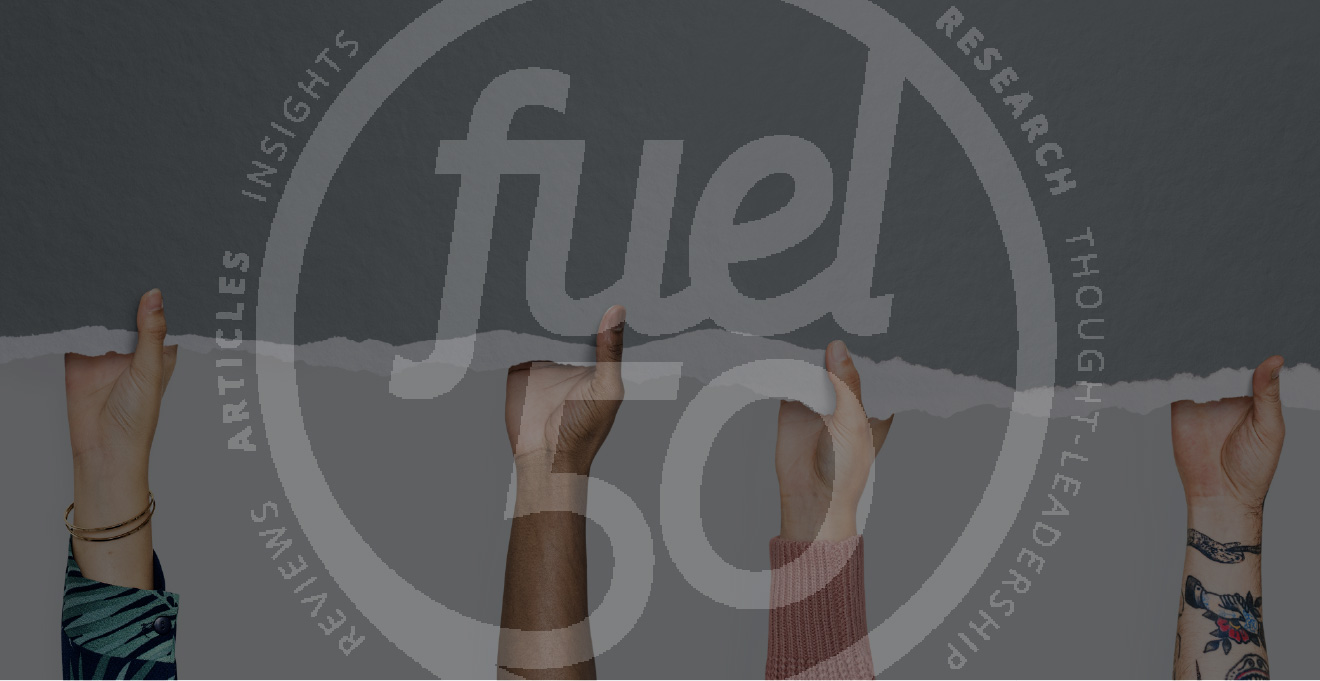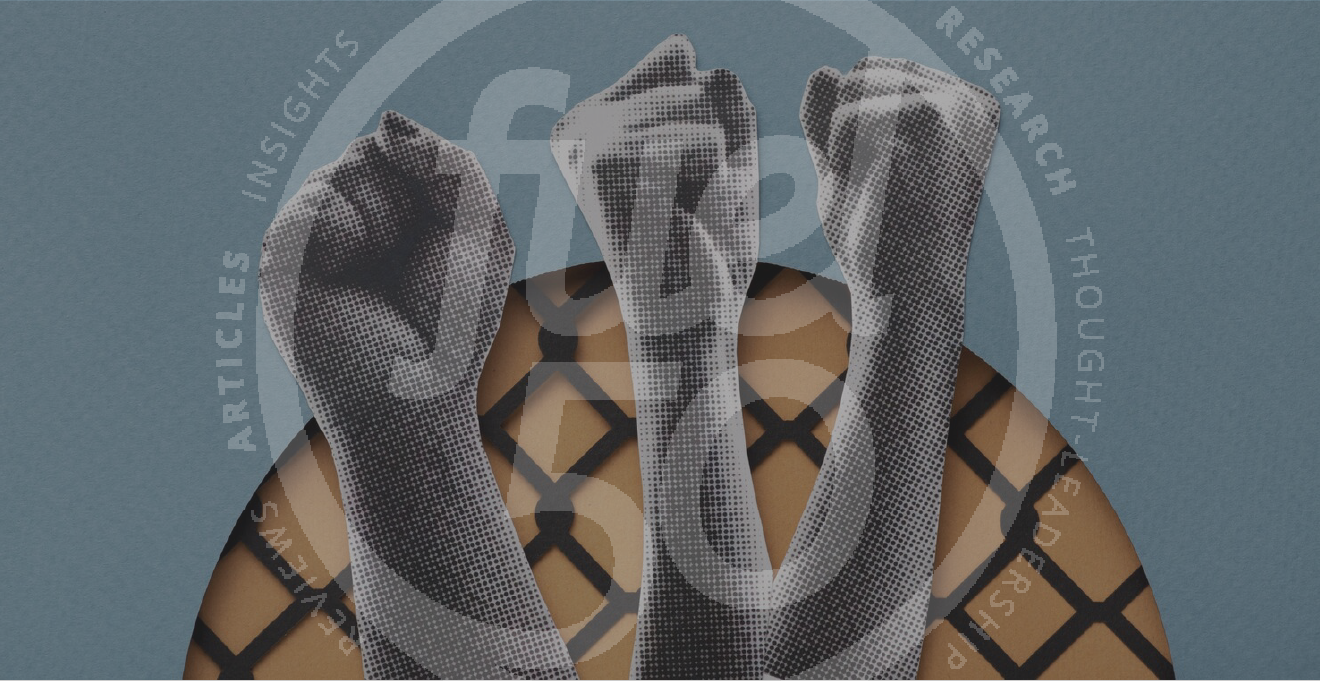Way back in 2018 — seems like a lifetime ago, doesn’t it? — McKinsey published an article that asked a pretty simple question: “What is employee experience? Is it a fad? The new buzzword? A fresh approach to competing in today’s war for talent? Or a fancy way to make engagement sound better to Millennials (and Gen Z)?”
Good questions, but McKinsey went on to answer them, saying,
“We define employee experience as companies and their people working together to create personalized, authentic experiences that ignite passion and tap into purpose to strengthen individual, team, and company performance.”
Enter Robin Erickson, Principal Researcher for The Conference Board, who talked at this Spring’s FuelX Talent Mobility Conference about Artificial Intelligence — To AI or Not to AI in Career Management and Talent Mobility. Her area of expertise is centered around “getting employees in the door through talent acquisition, figuring out how to keep them, how to engage them, and how to move them around. And then, also, looking at the retention aspect of that. And … how do you successfully offboard employees? And what kind of relationship do you have with them after that?”
Yes, that may be a job description, but it is a good definition of employee experience, too.
The four levels of Artificial Intelligence
Employee Experience is an interesting and important area to focus on because acquiring and retaining talent is critical in today’s evolving world. Companies around the world are struggling to find a post-pandemic normal and building and retaining a solid workforce is at the heart of that.
That’s where AI comes in.
A lot of people wonder — just what is Artificial Intelligence, anyway? Here’s how Robin Erickson defines it:
Artificial Intelligence is “technology that mimics human intelligence … by making assumptions, learning, or problem solving, predicting with a high degree of autonomy.” The No. 1 usage of AI right now, as she points out, is around machine learning.
That is the broad definition of AI, but she also points out that there are four levels or gradations of Artificial Intelligence to think about:
- Level 1 — Automation: “The first level of AI is what we’re calling assisted intelligence. This is where the platform assists humans in making decisions.” In other words, the platform helps HR parse HRIS data and create a consistent talent profile and learning plan for each employee.”
- Level 2 — Assisted Intelligence: This is where “the platform is analyzing the talent profiles and identifying skill gaps for employees against their interested roles.”
- Level 3 — Augmented Intelligence: “Augmented intelligence is really where the platform is doing as much of the work, if not more, than the human. And so, it is really that you are augmenting human decisions … your platform is actually identifying skill gaps that employees have based on competencies, based on their talent profiles, and then actually suggesting developmental opportunities to close those gaps, without having someone from human capital, or from learning and development actually involved in those suggestions.”
- Level 4 — Autonomous Intelligence: “The most sophisticated shade of intelligence would be where the platform provides end-to-end support to manage the employees’ careers without support from HR, hiring managers, or employees. … ” But she also adds, “We don’t think that should happen, especially in HR. The minute you take humans out of HR, I think that we’re going to have a problem.”
A classic win-win situation
Here’s the key question: How does Artificial Intelligence help to provide a better and more meaningful employee experience?
One example that Robin pointed to is what Google is doing to help its employees explore career paths throughout the organization.
Google leverages AI algorithms to match employees to different roles based on their preferences, and those of their managers, via its internal marketplace platform. Google encourages both employees and managers to rank their personal preferences for possible roles, job criteria, and other related factors. In the end, the internal marketplace platform can make career path suggestions based on that.
She also pointed to another example of a workplace AI system in action — Trane Technologies (formerly known as Ingersoll Rand) and the Fuel50 Talent Marketplace that they piloted three years ago with some incredible results.
After seeing good results — employee engagement increased by 3 percentage points — in the pilot audience, Trane Technologies then launched the Fuel50 Talent Marketplace across the entire organization of 42,000 employees. Since launch, Trane Technologies has seen an improvement of 67% in internal talent mobility, and a lift in lateral movement from 37% to 55%.
“Possibly even more impressive,” Robin added, “is that 97% of the employees have had a career conversation with their managers. … And they’ve got a key talent retention rate of 96% across the business, which is incredibly high and very, very impressive.”
And, she added this: Conference Board research has shown that building a great employee experience is critical for ALL organizations – and that a clear career development path is a highly important element of that employee experience. As Robin put it:
“AI definitely can help provide a better employee experience and give employees more agency over their organizational journeys by creating customized career paths. […]
Career development is an expectation that employees have, and it affects employee engagement. It affects turnover commitment, which is the precursor to leaving an organization. So, it’s not surprising that it’s really important for employees to have conversations with their managers about their career goals.”
THAT is what this is all about. Whether it’s Google, or Trane Technologies, or your organization, an AI-driven talent marketplace that helps employees and their managers have ongoing and impactful conversations about their career path and career goals is good for everyone. And, ultimately, it can lead to a first-class employee experience.
In other words, it’s a classic win-win situation.
Or as Robin Erickson said, it’s a “great example of the difference that this sort of talent marketplace can make within an organization.”
